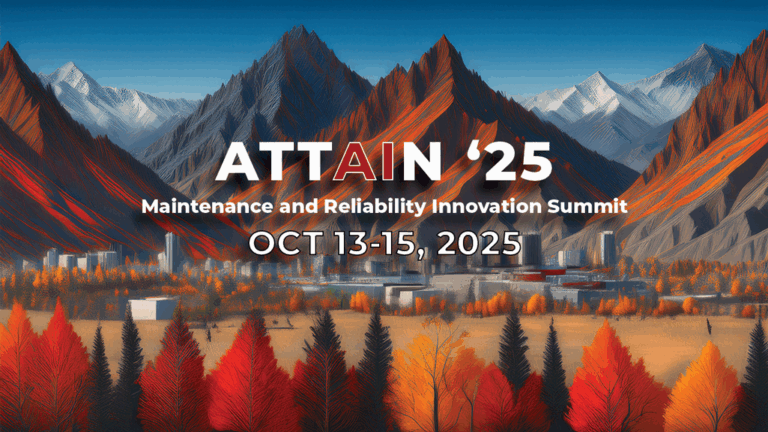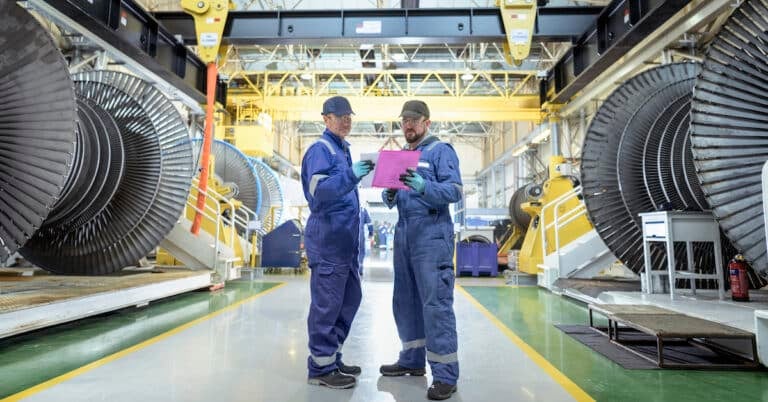Are you looking for ways to improve the efficiency and performance of your machinery? Modern industry is under pressure to function with a leaner environment involving fewer workers, purpose-built machinery, and razor-thin margins. This results in improvement efforts to extract more out of less and less. Management expects you to produce more product, deliver more service, and bring in more profit with fewer people and fewer failures than ever before. In order to accomplish this, it is necessary that you develop both procedures and equipment to keep up with demand. In this blog post, we will be discussing 3 easy machinery configuration improvements that can be implemented quickly to optimize machinery performance. From optimizing machine settings to using the right tools, these tips will help you get the most out of your equipment.
Why Does Machinery Configuration Matter?
Fewer things are evaluated more closely than the facility’s physical assets. You have to keep them functioning at optimal capacity and with consistent uptime to match production time. Many components must be in equilibrium for this to occur. However, your equipment may not be capable of performing at this level in its current state. It is essential to achieve a higher machinery configuration state. This means you optimize your machinery configuration to enable maintenance, operations, and reliability to carry out all required inspections on the equipment without having to stop using it, all the while maintaining or improving the equipment’s inherent reliability.
Changing the configuration of assets or altering them to enhance performance should not be taken lightly. To change the equipment for optimal performance, you must first determine how it should be enhanced. You can begin with defining optimal performance in a variety of areas. Depending on your organization’s objectives, you can then modify the equipment accordingly.
The Top 3 Machinery Configuration Improvements to Make
1. Enhanced Energy Efficiency
The amount of energy your equipment consumes is one area to save money and boost performance. When considering machinery configuration and energy efficiency, this can include electricity, diesel, gas, etc. There are a few strategies to improve energy efficiency, but we will focus on lubrication efficiency improvements.
Lubricant Selection
Choosing a lubricant is the starting point in this procedure. You must choose the appropriate lubricant based on the equipment’s requirements and the surrounding environment. A lubricant that is too thick, too thin, or lacking the proper additive package can result in significant frictional losses, wear, and higher temperatures. Some of the important factors to consider in your machinery cofiguration lubricant selection are:
- Viscosity of the lubricant at operating temperature compared to the required viscosity of the component
- Grade of greases to help minimize churning losses
- Viscosity index of the lubricant to maintain a suitable film thickness at all in-service temperatures
- Friction modifier additive packages to minimize losses during start-up conditions
The selection of lubricants for equipment subjected to frequent operational changes and vastly changing environmental circumstances, such as temperature swings, can be difficult.
Amount of Lubrication
In addition to selecting the correct lubrication, we must also ensure that the machine is functioning with the correct amount of lubricant. This is especially important in splash-lubricated or bath-lubricated equipment. Also, it is not limited to instances of under-lubrication. An excessive amount of lubricant inside the housing might cause parasitic drag. This results in a significant increase in the workload of the driving component, resulting in higher heat and energy consumption.
Variations in the level at which machines move through the lubricant can affect the creation of the lubricant film. At operating speeds, you must be able to splash or elevate the required volume. This also applies to grease-lubricated components. It is normal to observe lubricated bearings with excess grease escaping the seal. However, this is detrimental to the system and you should avoid it.
Inspection is just as important as application techniques in maintaining proper lubricant levels. To avoid slowing down the systems, you must be able to add lubricants gradually. This simple machinery configuration adjustment is crucial. While the machine is running, apply the grease gradually. This moves the old grease out of the path and aids in distributing the new grease. When grease is added quickly, the component functions under excessive pressure, which increases energy use. With oils, you must always maintain the right oil level. Therefore, the ability to top-up or purge based on changes is crucial.
2. Maintainability
When it comes to machinery configuration, adding items to equipment in the hopes that they will increase its reliability is insufficient. You need to also keep in mind how accessories will improve the equipment’s maintainability. You can make many of these machinery configuration improvements quickly and inexpensively. Making the machine simpler to repair, examine, and maintain while causing the least amount of disruption to operation is the aim. Here are a few quick items that can be helpful:
- Desiccant Breathers
- Sight Glasses
- Grease Line Extensions
- Quick Connects
- View Ports or Expanded Metal
- Magnetic Plugs
- Filters
Dessiccant Breathers
Desiccant breathers are excellent for lowering the amount of particles and moisture in lubricants. A reliable desiccant breather will dehumidify incoming air and dry the equipment’s headspace. You should use these wherever there are significant temperature fluctuations and on equipment that is susceptible to water contamination.
Sight Glasses
These are vital for checking oil level. You should mark them with the ideal oil level for when machinery is both operating and not.
Grease Line Extensions
Your lubrication technicians will thank you for these! They make the application of grease easier on equipment with hard-to-reach components, as well as equipment that is a safety hazard to be near while operating.
Quick Connects
Quick connects make it possible to add, drain, and even recirculate lubricant inside the system without exposing it to the environment. The aim should be to completely seal the machine so that you can perform all lubrication, inspections, and routine operational checks without exposing the interior to the environment. There is a chance for contamination and the development of a failure mode every time the equipment is opened.
View Ports or Expanded Metal
This machinery configuration allows you and your technicians to view inside equipment while it is operating. It is especially helpful to diagnose equipment issues.
Magnetic Plugs
The magnet provides you some basic insight into the wear rate of your machinery. When performing an oil change, you can check the plug for ferrous debris.
Filters
While it is critical to prevent lubricant contamination, it is equally critical to remove contaminants that are already in your lubricants. The most important removal tool is filtration. You can install permanent filters on equipment. Additionally, portable methods exist for more periodic removal of contamination. There is a broad selection of filter options, including categories, locations, ratings, materials, etc. To select the optimal filter for your application, you must evaluate each of these characteristics.
Particle filters are the most frequent method for removing contaminants. But, they are not the only method. During your machinery configuration, you should consider systems that focus on removing additional contaminants, such as water, heat, and varnish. Vacuum dehydrators, ion-exchange resin skids, and heat exchanger packages can be designed to meet the precise requirements of your equipment. This more targeted approach increases the longevity of both the equipment and the lubricant. As a result, you can expect fewer breakdowns and oil changes.
3. Life Extension of the Equipment
Keeping equipment operating at an acceptable level for longer is one approach to influence the total cost of equipment ownership. If you can lower the failure rate, you can anticipate that the machine will last longer with fewer problems. This is fundamental to preventive maintenance. To achieve this, you must examine the core reason for equipment failure. Often, contamination is one of the major reasons for equipment failure. Thus, it serves as one of the most common places to begin improving equipment reliability through configuration.
Exclusion and removal are the two facets of contamination control. When you actively remove contaminants from your systems, they are no longer there to have an adverse effect on the machinery. So, machinery configuration must update your assets to aid with both of these. Additionally, you should alter your maintenance procedures to help keep the equipment as clean as possible. Contaminants can be excluded at a considerably lower cost than they can be removed after entry. To do so, concentrate on all parts of the machine that have the potential for contaminant ingress. Shaft seals, breather ports, and fill ports are the most typical culprits. To some extent, you can improve each of these to reduce the danger of contamination. Seals can be more effectively chosen in terms of fluid compatibility, temperature, and even the abrasiveness of pollutants.

Heavy Machinery Configuration is an Ongoing Task
In conclusion, improving your machinery configuration can have a significant impact on the efficiency and performance of your equipment. By focusing on energy efficiency, maintainability, and the extension of equipment life, you can take steps to optimize your machinery for better performance. Remember that changing the configuration of assets or altering them to enhance performance should not be taken lightly. It is important to first determine your organization’s objectives and modify the equipment accordingly. By following these tips and making these 3 easy machinery configuration improvements, you can ensure that your equipment is running at its best and able to keep up with the demands of modern industry.


